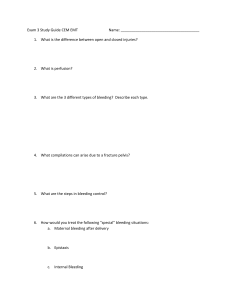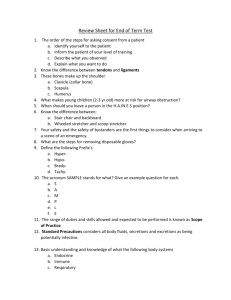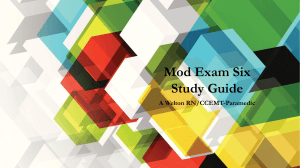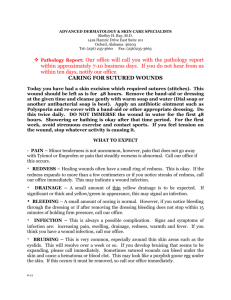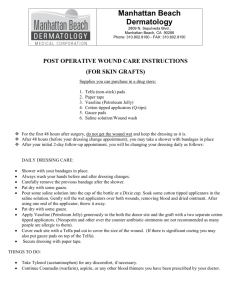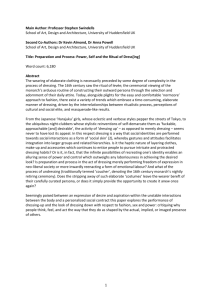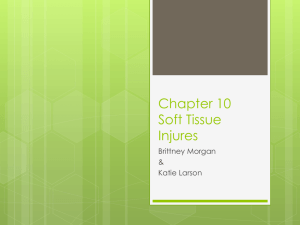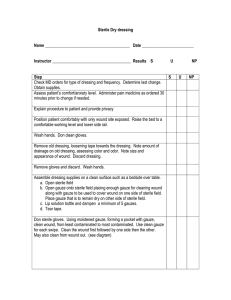Trauma – STS 2/9
advertisement
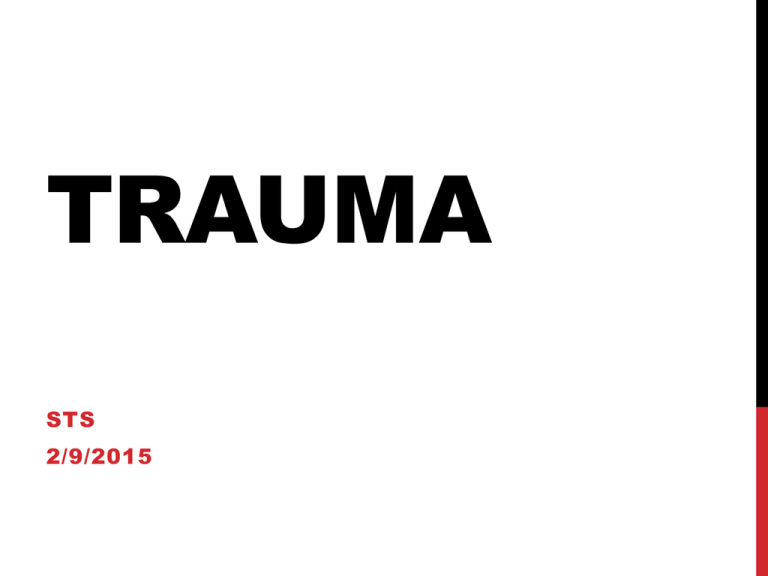
TRAUMA STS 2/9/2015 SKULL FRACTURES Bleeding: • Loosely cover bleeding site with sterile gauze • Check for CSF • Do NOT try to stop blood flow. Why? • Do NOT insert NPA • C-spine precautions • But keep in mind…THEIR SKULL IS FRACTURED…so be careful of how you hold their head EYE INJURIES Foreign objects in eye: • Irrigate with saline/water (flush medial to lateral) • Never attempt to remove object from cornea (only remove if object is on eyelid) • If impaled: stabilize with roller gauze • If chemical: flush for 20 min • If thermal burn: cover with burn dressing Blowout fracture: fracture of orbital bone; googly eyes • Check PERRL • Contacts should be kept in eye unless chemical present • Notify ALS if pt wearing contacts • TRANSPORT EPISTAXIS Bleeding from nose 1. Pinch nose 2. Tilt forward Do not tilt backwards; if pt swallows blood, may cause pt to vomit suction 3. Apply ice MOUTH INJURIES • Save loose teeth in container mixed with Pt’s saliva/milk • If bleeding in mouth is heavy • Check airway • Turn left-lateral • Prepare to suction Never stick your hand into someone’s mouth!! SOFT TISSUE INJURY Hematoma: pool of blood collects in an area, leading to compartment syndrome • may be due to blunt injury Treatment: splint and CMS OPEN INJURIES Abrasion: • clean and apply bandaid/dressing Avulsion: • clean and place flap back in right position • control bleeding • apply dressing OPEN INJURIES (CONT.) Impaled object: splint and stabilize When do you remove an impaled object? If it interferes with CPR/obstructs airway Gunshot wound: look for entry and exit wound control bleeding provide O2 blanket and shock position if in shock PNEUMOTHORAX Air in pleural space Sucking chest wound: open chest wound allows air into pleural space • Occlusive dressing • Tape 3 sides down • Auscultate every 5 min • If lung sounds are absent after applying occlusive dressing, ventilate and remove dressing momentarily to relieve pressure TENSION PNEUMOTHORAX What’s the difference between this and a sucking chest wound? • This is caused by a collapsed lung (genetic defect, trauma, etc) • You cannot ventilate a tension pneumo because it’ll add more air and exacerbate the problem What is the biggest indicator of a tension pneumo? • Tracheal deviation Treatment: TRANSPORT ABDOMINAL WOUNDS Evisceration: organ protruding through abdomen • Soak big trauma dressing in sterile saline solution • Tape over exposed organ • DO NOT touch exposed organ • DO NOT try to pack organs back AMPUTATIONS Wrap severed body part in sterile gauze Place in plastic bag Chill on ice • Do NOT allow body part to freeze or come into direct contact with ice NECK Jugular vein laceration • Apply occlusive dressing • Tape down on 4 sides • Monitor respirations closely (in case of air embolism) THERMAL BURNS 1st degree: superficial 2nd degree: dermis 3rd degree: full thickness Treatment: • Stop burning submerse in cool water/saline • If severe, apply burn dressing (nonadhesive) • Treat for shock • • Patients with critical burns lose a lot of fluids Rule of Nines CHEMICAL/ELECTRICA L BURNS Chemical burn treatment: • Remove clothing • For powder chemicals: brush off powder first • Flush with water for 20 min Electrical burn treatment: • Look for entry and exit wounds • Prepare to perform CPR in case of cardiac arrhythmia SCENARIO You get a dispatch call for a 20 y/o male at Doheny Fountain with suspected trauma.
